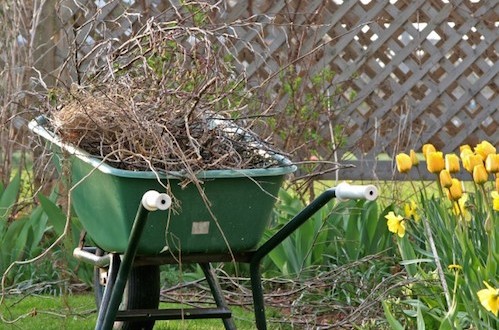 NewsNow
NewsNow
Dauphin’s Winter Global Market has made a donation to Food For Thought.
Jennifer Neiman, a coordinator with Dauphin’s Winter Global Market, says they donated $2,341.55
The money comes from the vendors, door prizes, and silver collection at the door when they have events.
They chose Food For Thought because both of their administrators have kids who’ve used the program.
In the fall they’re going to start up again with a plan to donate to Food For Thought again.
- Details
- Contributed by Isaac Wihak
The May Long Weekend is a time to celebrate, but there are some rules on how you can do so while camping.
Provincial Parks in Manitoba do not have bans regarding alcohol this weekend. You can have drinks at your campsite but you are not allowed to leave your campsite with a drink in hand.
Riding Mountain National Park however does have a liquor ban in effect at all of its campgrounds.
Riding Mountain and the Provincial Parks share a common cannabis ban. You are not allowed to consume marijuana anywhere in the parks.
There are no campfire restrictions as of yet in the parks, but park officials said that could change due to weather conditions.
- Details
- Contributed by Josh Sigurdson
Coming up on Tuesday, May 21st, spring cleaning for the City of Dauphin will begin in the Day 1 Area.
Crews will go through the rest of the 4-day cycle, following the completion of the Day 1 Area.
Compostable materials such as garden waste, grass, leaves, shrubs, and tree branches will be collected.
The materials must be free of recycling, household and hazardous waste, and must be in a clearly identifiable pile, or packaged in biodegradable bags or boxes.
The pick-up will occur in the back lane if you don’t have a back lane place your items on the boulevard near the curb.
Crews will be using large equipment and ask for items to be placed close to the lane or curb to avoid property damage.
For more information, call 204-622-3202.
- Details
- Contributed by Isaac Wihak
The government of Manitoba recently released statistics showing that court cases are taking less time across the province.
Justice Minister Cliff Cullen says that 70% of the people sitting in Manitoba’s jails are still awaiting trial.
That fact inspired the Justice Department to create a Criminal Justice System Modernization Strategy which will bring more cases to their close more quickly.
Part of the strategy is restorative justice which includes putting systems in place to help prevent young offenders from re-entering the system. The program helps link young offenders with supports for housing, education, and employment.
The incarceration rate in Manitoba is among the highest in Canada. 231 out of every 1,000 people are in provincial jails.
One way the province is speeding up the court process is by deferring dealing with minor crimes to the local level. The province is also investing in new technology to help shy away from the paper-based system the bench currently operates on.
So far the new policies have decreased the wait times by 19%. The average wait for a trial used to be around 180 days, now it has been shortened to 160 days.
The new policies also encourage Crown attorneys to look at files earlier.
The province has committed to releasing annual statistics around the changes being made through the new strategy.
- Details
- Contributed by Josh Sigurdson
Manitoba Infrastructure’s Hydrologic Forecast Centre that forecasts of strong winds have resulted in a high wind warning effect for the South Basin of Lake Manitoba.
These concerns will be shared with residents of the south basins of Lakes Winnipegosis and Lake Dauphin.
Strong north winds are forecast starting late this evening and continuing to tomorrow around noon.
Wind speed and wave action could raise levels by as much as five feet or more.
Property owners are advised to take precautions.
- Details
- Contributed by Isaac Wihak
If you’d like to be out on the lake all season long in Riding Mountain National Park, you’ll need to attend an aquatic invasive species session.
The goal of the sessions is to enhance the invasive species program and engage frequent lake users to help protect the waters.
Having a boat inspection is mandatory before getting any kind of boating permit.
This year there are single day, seven day, and season-long boating permits.
Season-long permits have been introduced because some people didn't want to renew permits and have boat inspections every week.
As well as the many sessions going on at the visitor centre in Wasagaming, there will be sessions going on in Dauphin, McCreary, and Rossburn.
The Dauphin sessions will go on at the curler’s lounge in the rec complex on June 5th and 11th from 7-9pm, In McCreary, a session will take place on June 14th from 7-9 pm at the community centre, and in Rossburn on May 27th from 7-9 pm at the drop-in centre.
- Details
- Contributed by Isaac Wihak
Having your furry canine in your vehicle is perfectly fine; having them on your lap in the driver's seat is not.
If you're caught, you can be fined under Section 95(3) of the Highway Traffic Act. If you're driving is affected because of the animal, you could be charged for Careless Driving under Section 188 of the HTA, and that's a more serious offence than Section 95(3).
Some officers believe driving with a pet on your lap is more distracting than talking on a cell phone.
That's because a pet interferes with the driver's ability to control the vehicle, react to hazards and it obstructs their view.
- Details
- Contributed by Darnell Duff
The provincial government is considering a change to the tobacco tax.
The PST will drop to 7 per cent on July 1st and Manitoba has introduced the Tobacco Tax Amendment Act to keep the retail price of tobacco the same.
If passed, the tax on each cigarette would rise from 29.5 cents to 30 cents, fine cut tobacco would rise to 45.5 cents from 45, and raw leaf tobacco products would have a 27.5 cents tax, up from 27 cents.
Finance Minister Scott Fielding says this approach is consistent with what the federal government did when they reduced the GST.
The proposed amendments to The Tobacco Tax Act would come into effect on July 1 if the bill receives royal assent before the legislative assembly rises on June 3, or on Nov. 15 if it receives royal assent on or after July 1.
This chart gives a visual on how the change will affect tobacco prices:

- Details
- Contributed by Isaac Wihak
As the May Long Weekend approaches, more and more boats will be hitting the water.
With more boats comes the need for people to know the safety tips and regulations for being on the water.
The operator of the boat has a zero tolerance for alcohol. The fine for driving a boat impaired is a minimum of $1000 for a first offence, the second and third times can result in jail time.
In Manitoba, in order to legally drink on a boat, it must have a permanent cooking facility, a sleeping cabin, and a toilet. The boat must also be anchored down.
Boaters must have all the necessary paperwork on board, including your operator’s card and proof of purchase. You could be charged $250 if you don’t.
There must be lifejackets for every person on board. The fine for not having PFD’s on board is $200 and it multiplies for each passenger not in possession of one.
Always make sure you have a First Aid Kit, as well as a kit full of emergency supplies.
And finally, driving a boat recklessly can not only hurt yourself and others, but it can also result in fines anywhere from $350 - $500.
Take these rules into consideration the next time you hit the water and have a good time.
- Details
- Contributed by Josh Sigurdson
The Northern Lights will be visible from everywhere in the Parkland over the next few days.
From May 14th to 16th, the Aurora will be most visible.
- Details
- Contributed by Josh Sigurdson
The Graduation Powwow is tomorrow from 10 til 2.
The powwow is a celebration of life and honours the grads from the MVSD and the ACC.
The graduates will be honoured by walking in front of the community coming in through the grand entry, later on, they’ll be honoured with gifts, and then the graduates will honour the community by giving a giveaway.
Carole Shankaruk, the indigenous education facilitator for the MVSD, says the graduation powwow is meant to bring communities together.
Over the lunch period, there will be entertainment. Desiree Dorion will be performing as well as the D-Town steppers, a square dancing group.
Shankaruk says the powwow is a big learning opportunity for both indigenous and non-indigenous people.
- Details
- Contributed by Isaac Wihak

















